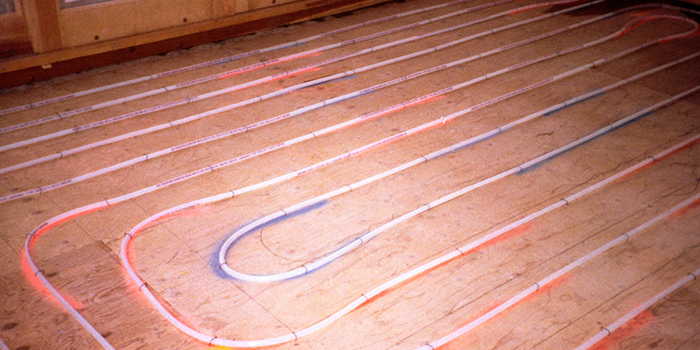
Radiant Heating and Cooling
Radiant heating systems supply heat directly to the floor or to panels in the wall or ceiling of a house. Radiant heating is more efficient than baseboard heating and usually more efficient than forced-air heating because no energy is lost through ducts. The lack of moving air can also be advantageous to people with severe allergies. Hydronic (liquid-based) systems use little electricity, a benefit for homes off the power grid or in areas with high electricity prices. The hydronic systems can also be heated with a wide variety of energy sources, including standard gas- or oil-fired boilers, wood-fired boilers, solar water heaters, or some combination of these heat sources. (Energy Savers) Radiant floor heating is not always the most cost effective or energy efficient option with a building retrofit, so discuss with your contractor the cost to install as well as the estimated savings as compared to your current heating system.
Estimate your potential to save energy and money by installing this product, please see the U.S. Department of Energy’s Home Energy Saver calculator.
To check if there are any incentives or rebates available for this product in your area, please visit the Database of State Incentives for Renewables and Efficiency (DSIRE).
Minimum Requirements
Radiant systems must be powered by a qualified heat pump (electric or gas-fired, or ground-source), efficient gas boiler, or solar system (not by electric resistance).
